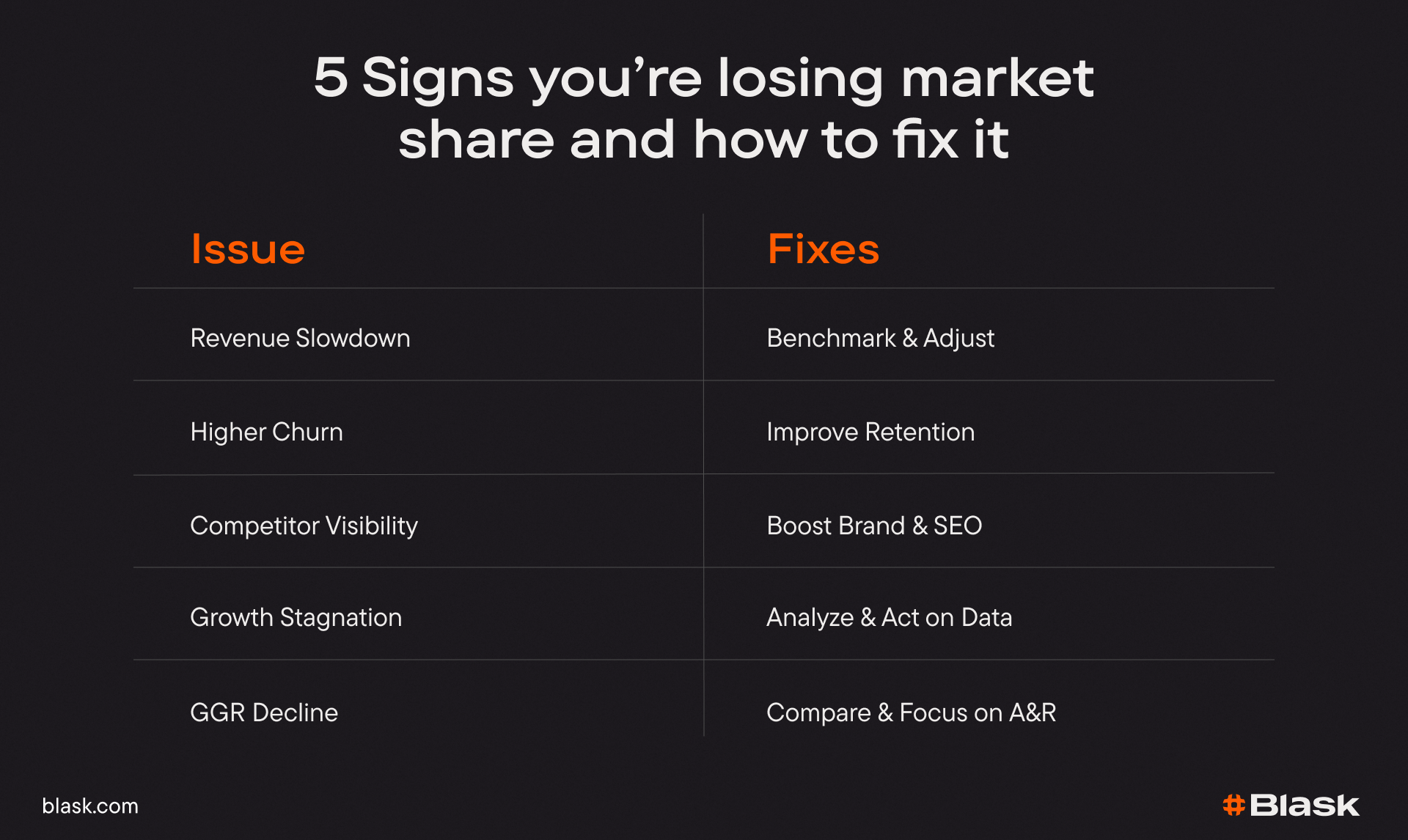5 signs you’re losing Market Share (and how to fix it)
Losing market share can feel like a slow leak in your bottom line. While it may not be immediately obvious, its long-term impact is significant. Spotting the warning signs early can help you fix the problem before it spirals out of control. Below are five critical signs that you’re losing market share, and more importantly, how you can address them.
1. Your revenue is growing, but slower than the industry
Revenue growth is always a positive sign. However, if your competitors are growing faster, you’re still losing market share. This scenario is common when the industry is booming, but your brand isn't keeping pace.
How to fix it:
2. Increased customer churn
Losing customers faster than you can acquire new ones will erode your market share. If you notice that customers are consistently leaving, especially to competitors, this is a major red flag.
How to fix it:
- Enhance retention strategies:
Implement loyalty programs, improve customer support, or offer personalized experiences. Monitoring customer retention is essential to reducing churn rates. - Engage with feedback:
Conduct exit surveys with departing customers to understand their reasons for leaving. Use this data to resolve common complaints and issues.
3. Your competitors are gaining visibility
If your competitors are gaining traction in online searches, social media, or ad spend, they’re likely eating into your market share.
How to fix it:
4. Stagnating year-over-year (YoY) and month-over-month (MoM) growth
YoY and MoM growth metrics are key indicators of overall performance. If these metrics are stagnating while your competitors are growing, it’s a signal to act.
How to fix it:
5. Declining Gross gaming revenue (GGR)
Gross Gaming Revenue (GGR) represents total revenue before expenses. A drop in GGR is not just a loss in revenue; it can signal a shrinking market share, especially if competitors are growing.
How to fix it:
Visual summary of signs and fixes

Final thoughts
Losing market share doesn’t have to be the end. By recognizing these signs early and taking action, you can reverse the trend and return to growth. Tools like Blask’s comprehensive market tracking, from YoY growth metrics to customer retention insights, can give you the data you need to stay ahead.